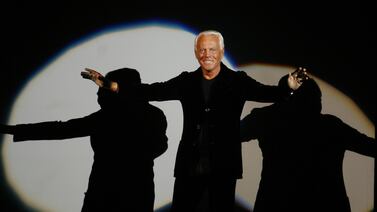LOS ANGELES (AP) — Barely two years ago, Gregory Bovino was relieved of command of the Border Patrol's El Centro, California, sector and encouraged to retire.
Now he leads immigration enforcement in Los Angeles, an assignment that began June 6 when the Trump administration launched its first sustained blitz of a U.S. city with speed and force that broke recent norms, including from President Donald Trump's first term. His career rebound illustrates how radically immigration policy has changed.
A recent August morning was typical. Several unmarked SUVs with tinted windows sped to the curb outside a Home Depot in the Van Nuys area of Los Angeles. A Guatemalan tamale vendor was handcuffed while men with M4 rifles and military-style gear watched over and day laborers fled. Protesters sounded sirens and whistles. One briefly blocked a Border Patrol vehicle, but agents left in a little more than four minutes.
The same team, dressed as civilians with faces masked and badges on their waists, stormed a car wash in the suburb of Montebello around 11:30 a.m. They made four arrests, including a Guatemalan worker who fled down an alley and a Mexican employee who was tackled after running into the office. It was over in seven minutes.
Bovino says he is far from finished. Illinois Gov. JB Pritzker said Bovino called the head of the state police Saturday to say immigration officers were coming to Chicago, without elaborating. It aligns with comments by Trump and Homeland Security Secretary Kristi Noem putting Chicago on notice for a Los Angeles-style enforcement surge.
'Turn and burn' describes a blistering pace, massive force
U.S. Immigration and Customs Enforcement, the agency primarily responsible for interior immigration enforcement since its was created in 2003, has historically made arrests in the streets after lengthy investigations of individual targets, including surveillance that an official once likened to watching paint dry. Officials rarely have judicial warrants to enter a home, causing them to wait outside.
It is not a pace that will lead to the mass deportations that Trump has promised.
“We're going to turn and burn to that next target and the next and the next and the next, and we're not going to stop,” he said in an interview in a seventh-floor conference room of the federal building in West Los Angeles, where an unused office wing serves as a sparsely furnished temporary base.
“Time on the X” is another favored Bovino term to underscore the use of overwhelming, lightning-quick force. He wants agents to leave a raid within minutes to avoid potential conflict with demonstrators, like an hourslong confrontation that occurred June 7 outside a Home Depot in Paramount.
Bovino has supporters and critics — lots of them
Agents have smashed car windows, blown open a door to a house and patrolled the fabled MacArthur Park on horseback. Bovino often appears in tactical gear, as he did outside Gov. Gavin Newsom’s news conference on congressional redistricting on Aug. 14.
Bovino has been the subject of two court orders dealing with racial profiling, which the administration has appealed, one for raids he led in California's San Joaquin Valley during the final month of Joe Biden's presidency and one for what has unfolded in Los Angeles.
A court filing by those who sued Bovino and the government says “masked federal agents brandishing weapons cannot command people going about their daily lives to stop and prove their lawful presence solely because of their skin color, accent, where they happen to be, and the type of work they do.”
Where critics see heavy-handed racial profiling, Bovino sees legitimate use of force.
Smashing car windows when a driver refuses to open and is subject to arrest is “a safer tactic than letting someone drive away and then getting in a high-speed pursuit,” he says.
Blasting the door off a home in Huntington Park to search for a man accused of ramming a Border Patrol vehicle days earlier was a “very, very prudent, thoughtful application of tactics,” said Bovino, who joined that early-morning raid. “I don’t want to surround a house for hours and hours and hours and then create another riot.”
He dismissed allegations of profiling, saying he identifies targets based on intelligence, and he defended the optional use of masks for agents who fear that being identified may jeopardize their personal safety.
Bovino is having a career rebound
Bovino's career rebound coincides with a push by the Border Patrol to the nation's interior, a return to the agency's roots. Bovino has long championed interior enforcement by the Border Patrol, going back to a 2010 raid that he led in Las Vegas while station chief in Blythe, California.
Bovino blamed a batch of perceived transgressions for being relieved of command in August 2023, details of which have not been previously reported: an online profile picture of him posing with an M4 assault rifle; social media posts that were considered inappropriate; and sworn congressional testimony that he and other sector chiefs gave on the state of the border during a record surge of migrants.
He did not retire, the profile photo with the assault rifle is back online and at age 55, some speculate that he may rise even higher.
“He sees what the right and left lanes are on this, and he’s going to get out there and he’s going push the limits,” said Paul Beeson, who, as a Border Patrol sector chief, twice named Bovino to lead stations in Blythe and Imperial Beach, California.
Copyright 2025 The Associated Press. All rights reserved. This material may not be published, broadcast, rewritten or redistributed without permission.





